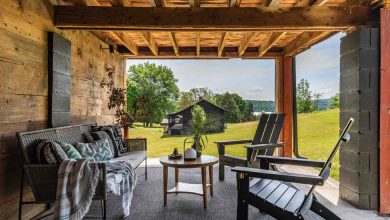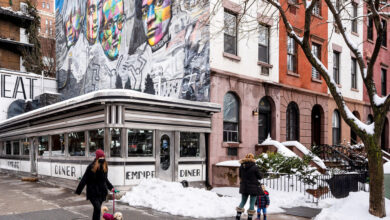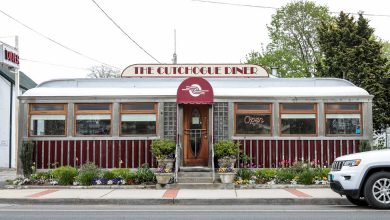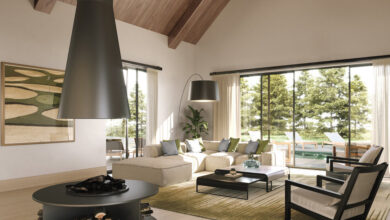Bernardsville, N.J.: A Gilded Age Enclave Looking to the Future
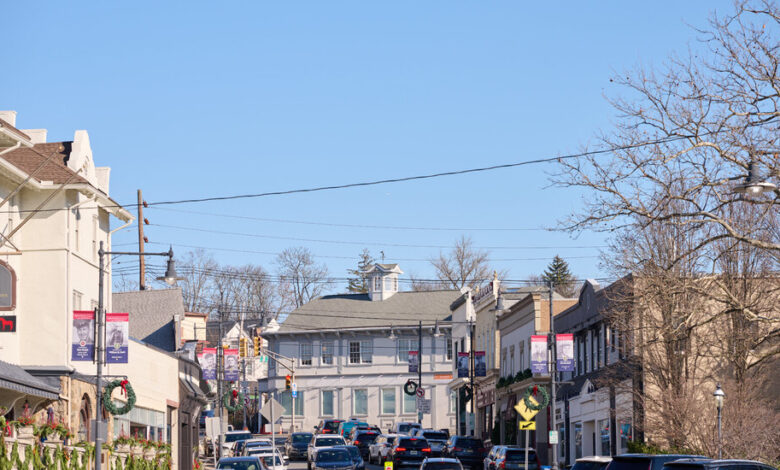
[ad_1]
After nearly 17 years of commuting more than an hour each way from North Jersey to his company’s headquarters in Basking Ridge, Ray Wierzbicki finally moved last December with his wife, Bernadette, to a house just minutes from his office — an English country-style home in Bernardsville, N.J. Seven months later, he retired from Verizon, where he had worked for 43 years, most recently as a senior vice president.
Joking that he should have made the move south a little earlier, his colleagues tried to encourage him to “stay a bit longer,” to which Mr. Wierzbicki replied: “No thanks, I’m good.”
He’s busy enjoying his new life in the five-bedroom 1885 house on five acres that the couple bought for $3 million, which he described as “something you’d see in one of my wife’s magazines.”
“We feel like we’re very blessed to wake up here every morning,” Mr. Wierzbicki, 69, said. “We love history, and you can spend every weekend driving around and seeing all the houses and learning about their pasts.”
Indeed, as one of the Gilded Age’s premiere country enclaves, Bernardsville is steeped in history. After railroad lines from Manhattan were extended to the area in 1872, the scions of New York City society began flocking to the borough, buying large tracts of land and hiring notable architects to design what they called “summer cottages.”
“This was the average kind of house here back then,” said Molly C. Tonero, a sales associate with Turpin Realtors, during a recent driving tour past Bernardsville’s numerous grand estates and rolling meadows. “When financiers came out from Manhattan, they had big pockets and bought as much land as they could. They wanted fresh air, acreage and a view.”
Many of those homes still stand, though ownership has passed from turn-of-the-century industrialists and banking magnates to today’s leaders in media, fashion, entertainment and technology. But not all of Bernardsville’s nearly 8,000 residents have deep roots or excessive wealth.
Mayor Mary Jane Canose, a resident for 52 years, said the borough has seen a lot of turnover since the pandemic. “Bernardsville tended to have an older population,” Ms. Canose, 73, said. “But with Covid, a lot of those people wanted to sell their houses and go south, so now we’re seeing lots of young families with children moving here.”
Heather Grabin is part of that influx. She moved to the area in 2022 from Jersey City, in search of better schools for her children, Priya, 11, and Gobind, 6. Ms. Grabin, 36, a hospitality consultant, rented a home in neighboring Far Hills for a year before buying a three-bedroom colonial in Bernardsville for $693,000 in August.
“Everyone is so welcoming here,” she said. “I think the town is diverse to some degree, and that adds to its appeal. There’s always something going on to help other people, and having my kids around that is important.”
According to the United States Census Bureau, Bernardsville’s population is 91 percent white, but the regional school system’s population is about a quarter Hispanic.
Natzar Hill came to New Jersey from Costa Rica when she was 7 and moved to Bernardsville 12 years ago. Ms. Hill, who describes herself as an “unofficial liaison” with the Spanish-speaking community, said she helps families assimilate into the borough. Recently, she launched a project selling homemade evergreen gnomes to support families in need; in three weeks, she has sold 58 and raised nearly $4,000.
“We’re painting the town red with gnomes and inviting the Spanish-speaking community to be part of the process,” said Ms. Hill, 40. “It’s all about inclusion, trying to support each other with resources we already have here but many may not be aware of.”
What You’ll Find
Most residents of this 12.9-square-mile Somerset County borough define where they live as either “the mountain” or “the village,” reinforcing what Daniel Lincoln, an architect, describes as a historically “bifurcated” identity.
“Since the 1880s, you had your wealthy people on the mountain, and in town you had the merchants, farmers and immigrants who helped to build those mansions,” said Mr. Lincoln, a member of the Bernardsville Historic Preservation Advisory Committee. “Today, there is a whole new generation making a lot of money. And we have a fairly substantial Hispanic population, from Uruguay and Paraguay, working in construction and landscaping and owning their own contracting companies.”
Although there is no defined border between the two areas, those who live within walking distance of the schools and downtown are generally considered to be living in the village, while the area northwest of Route 202 and the train tracks is considered the mountain. Properties in the mountain area are zoned with five- or 10-acre minimums and, for the most part, are not on the borough water or sewer systems. The mountain is also where the historic estates are, though a small area near the high school has been designated the Olcott Avenue Historic District. Neighborhoods south of the train tracks have more modest houses, including ranches, split levels and smaller colonials.
Most of the borough’s commercial activity — specialty shops and services, a handful of restaurants and the historic Bernards Inn — are along Morristown and Mine Brook Roads, or Route 202.
Aside from the conversion of the parish house of St. Bernard’s Church into 20 luxury condominiums four years ago, there hasn’t been much in the way of condominium or apartment development in town. But that is about to change, with a proposed mixed-use development that recently received borough council approval. Situated at a key downtown intersection, the Palmer Square project will comprise 68 apartments, 10,000 square feet of retail space and an underground parking garage. Some, like Mr. Lincoln, have voiced concern about the proposed four-story height, while others question the tax breaks given to the developers and the lack of apartments that will satisfy the state’s affordable housing requirements.
The developers, Advance Realty Investors, will contribute to the borough’s affordable housing fund for future affordable housing projects, said Ms. Canose, who feels the project is vital to Bernardsville’s downtown revitalization. “We’re trying to do enough projects to still keep the character of town, but that also bring people into town,” she said. “If you don’t change, you die.”
What You’ll Pay
As of mid-December, there were 20 homes listed for sale in Bernardsville, including two for more than $12 million. One, a 32-acre estate with an 1886 castle-like house designed by George B. Post, is owned by the fashion designer Marc Ecko; it is listed for $13.75 million. The second, a 25,444-square-foot house built in 1998 on 32.88 acres, is priced at $12.995 million. At the low end of the market is a two-bedroom bungalow built in 1930, listed for $390,000.
The median price of the 94 homes sold through Dec. 12 of this year was $795,000; during the preceding 12 months, 117 properties sold for a median of $780,000, according to the Garden State Multiple Listing Service.
While most of the homes listed for less than $1 million are on the market for just a few weeks, others, like the two-bedroom 1950s ranch house that Mikayla Walsh, 25, and Mike D’Elia, 31, bought in May, have lingered far longer.
After tracking the house for months and watching its price drop, the couple made an offer of $580,000 that was accepted. “I tell people we bought the house for our two dogs,” said Ms. Walsh, referring to their 1.28 acres of wooded land with a stream running through it. “We wanted property, and didn’t want something brand-new. It needs a lot of work, but it’s the perfect house for us.”
The Vibe
A valuable guide for those who want to visit Bernardsville’s mountain estates is the two-volume “New Jersey Country Houses: The Somerset Hills,” by John K. Turpin and W. Barry Thomson, which details dozens of local mansions built between the 1880s and World War II.
There is also a downtown walking tour guide, put together by the Historic Preservation Advisory Committee and Friends of Historic Bernardsville, with information on sites like the Bernards Inn, built in the early 1900s, destroyed by fire and then rebuilt into what is now a boutique hotel, with the new Red Horse by David Burke restaurant. A few doors down, the Bernardsville Cinema also recently reopened, showing current movies on three screens.
Near the schools are a municipal pool, tennis courts and sports fields that are referred to as the “polo grounds.”
The Schools
Bernardsville is part of the Somerset Hill School District, sharing services with Peapack-Gladstone and Far Hills for elementary and middle schools, and Bedminster, as well, for high school.
Students in prekindergarten through fourth grade attend the Marion T. Bedwell Elementary School, which enrolls about 450 students. Those in fifth through eighth grade go to Bernardsville Middle School, which has about 470 students. About 800 attend Bernards High School, in Bernardsville, which offers 27 Advanced Placement classes, a media center, and champion math and science leagues. During the 2021-22 school year, the average SAT scores were 599 in reading and writing, and 592 in math, compared with state averages of 538 and 532.
Private school options include Far Hills Country Day School and Mendham Country Day School, for students in preschool through eighth grade, and Gill St. Bernard’s School in Peapack-Gladstone, for those in prekindergarten through 12th grade.
The Commute
Bernardsville is about 40 miles west of New York City; commuting by car takes about an hour, depending on the traffic.
New Jersey Transit provides train service from Bernardsville to Penn Station in Manhattan, with direct trips during rush hours and transfers in Newark or Summit during off hours. The train rides average about an hour and a half; tickets for either cost $15 one way or $436 for a monthly pass.
The History
Representative Millicent Fenwick lived most of her life in Bernardsville, serving in local government before heading to Congress at age 64. An outspoken, pipe-smoking civil rights advocate, she was the model for Garry Trudeau’s Doonesbury character Lacey Davenport. She died in 1992, at 82, in her home in Bernardsville. A bronze statue of her, the first outdoor statue of a woman in New Jersey, was unveiled in 1995 and stands near the train station.
For weekly email updates on residential real estate news, sign up here.
[ad_2]
Source link



